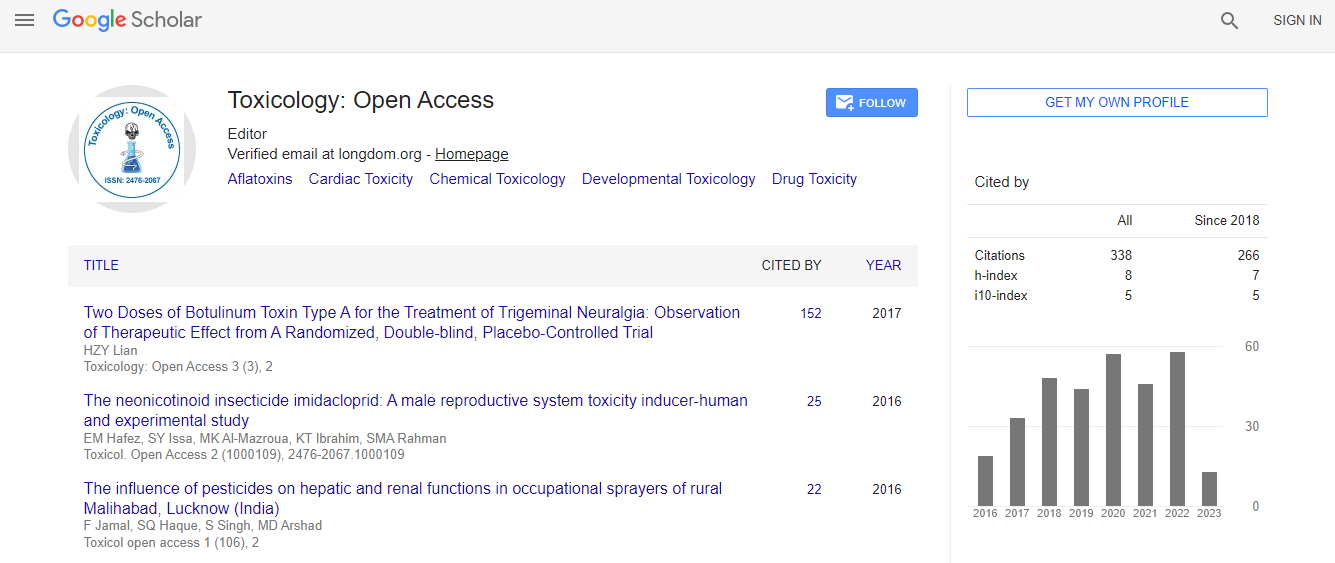Our Group organises 3000+ Global Conferenceseries Events every year across USA, Europe & Asia with support from 1000 more scientific Societies and Publishes 700+ Open Access Journals which contains over 50000 eminent personalities, reputed scientists as editorial board members.
Open Access Journals gaining more Readers and Citations
700 Journals and 15,000,000 Readers Each Journal is getting 25,000+ Readers
Google Scholar citation report
Citations : 336
Toxicology: Open Access received 336 citations as per Google Scholar report
Indexed In
- Google Scholar
- RefSeek
- Hamdard University
- EBSCO A-Z
- Geneva Foundation for Medical Education and Research
- Euro Pub
- ICMJE
Useful Links
Related Subjects
Share This Page
Cytotoxic effects of Androctonus australis hector venom on the isolated liver
8th World Congress on Toxicology and Pharmacology
Nadjia Bekkari and Fatima Laraba Djebari
University of Science and Technology Houari Boumediene, Algeria
Posters & Accepted Abstracts: Toxicol Open Access
Abstract
Background: Androctonus australis hector (Aah) venom is well known by its high toxicity and when injected to animals, is able to induce several symptoms starting by affecting cardiovascular dysfunctions, respiratory distress and tissue alterations such as hepatic damages and acute inflammatory. These symptoms were related to the massive release of neurotransmitters after neurotoxins binding on the ionic channels of peripheral nervous system. Methods: In this study, we focus on the liver as probable direct target for Aah venom. Venom was administrated into isolated liver. Tissue explant culture was used to quantify MPO and complement activities, the evaluation of oxidative status and histological analysis were also carried. Results: Results showed that the Aah venom induces several alterations and injuries. An unbalance of oxidative status is expressed by the reduction of NO level and an increase of both MDA and GSH levels and the catalase activity. Inflammatory cell hyperplasia was observed on the histological micrographies and associated with an increase of MPO and complement system activities. Histological analysis also revealed apparition of necrosis areas. Conclusion: These results indicate that Aah venom has cytotoxic effect on the isolated liver which is not related to neurotransmitters or other systemic mediators released during scorpion envenoming. It seems that Aah venom contains some bioactive components other than neurotoxins which could have direct target in this tissue.Biography
Nadjia Bekkari has completed her PhD from USTHB University. She is member of research staff which work on venoms (snake and scorpion) under the direction of Pr Laraba-Djebari Fatima. She has published 2 papers in reputed journals.
Email: flaraba@hotmail.com

 Spanish
Spanish  Chinese
Chinese  Russian
Russian  German
German  French
French  Japanese
Japanese  Portuguese
Portuguese  Hindi
Hindi 